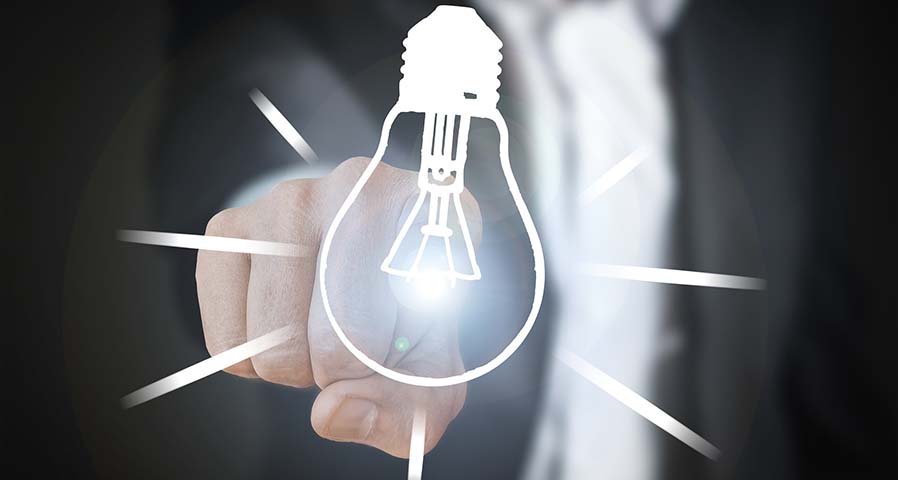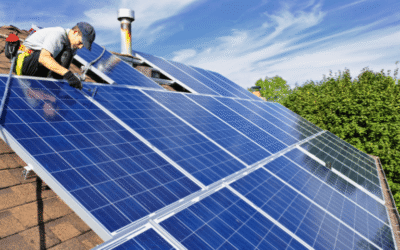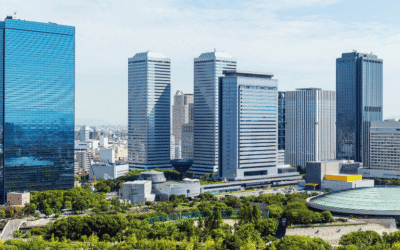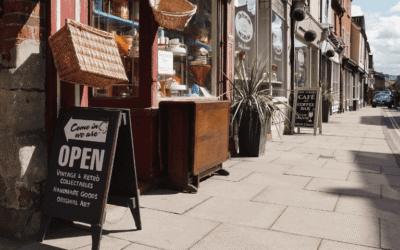Smart lighting controls for building management is helping streamline operations so businesses can run more efficiently and sustainably. By integrating automation, data-analytics and advances controls, companies can lower energy consumption and reduce costs meanwhile creating a comfortable and secure workplace.
Why Smart Lighting Controls Matter
Traditional lighting systems have long been one of the biggest sources of energy consumption in commercial facilities. Smart lighting controls have helped businesses curb the amount of energy used throughout their facilities, leading to significant cost savings in utility bills. Not only that, but they provide an additional method for companies to implement sustainable business practices.
Beyond energy efficiency, smart lighting controls for facility management contribute to occupant well-being. Features like automated daylight adjustments, color tuning, and motion-based activation ensure optimal lighting conditions, which can improve concentration, reduce eye strain, and create a more comfortable work environment.
Key Types of Smart Lighting Controls
Different types of lighting controls for commercial facilities offer unique benefits depending on the application. Understanding these technologies helps facility managers select the best system for their needs.
Timers
Facility managers can automatically schedule lighting systems to go on and off with timers. They are particularly effective in spaces with predictable occupancy patterns, such as office buildings and retail stores, leading to energy savings of around 24%.
Occupancy Sensors
These sensors detect movement and automatically turn lights on or off based on room usage. This technology is particularly beneficial in areas with intermittent occupancy, such as conference rooms and restrooms, reducing unnecessary energy use by an estimated 24%.
Daylight Harvesting Controls
Daylight-responsive lighting controls use sensors to adjust artificial light levels based to mimic natural light. During mornings lighting will appear dim then brighter towards the afternoon then dim back down towards the evening to help employees’ circadian rhythm wind down.
Task Lighting Controls
Task-specific lighting adjusts brightness levels based on the needs of an activity. This feature is especially useful in office spaces, improving visual comfort and reducing eye strain. Examples of task lighting could be lamps on desks or spotlights over workstations.
Demand Response Controls
These controls reduce lighting power during peak demand hours, helping facilities lower electricity costs. Demand response strategies are especially beneficial in large commercial buildings where energy consumption is significant.
Color Tuning Controls
Color tuning technology allows lighting to shift between different color temperatures to mimic natural daylight cycles. This can support circadian rhythms, improve workplace productivity, and even enhance customer experiences in retail spaces. Facilities using this technology typically achieve energy savings between 38–44%.
Advanced Components of Smart Lighting Systems
A truly integrated smart lighting system consists of several key components that work together to optimize lighting efficiency and management.
Cloud and Network Infrastructure
Smart lighting controls rely on network connectivity to enable centralized control and remote monitoring. Cloud-based platforms allow facility managers to adjust lighting settings and track energy usage from anywhere.
Energy Management Software
An energy manager collects data on energy consumption, providing insights into patterns and potential areas for improvement. This software helps organizations set benchmarks and optimize their lighting strategies.
Smart Lighting Gateways
A gateway acts as the central hub, consolidating data from multiple lighting devices and ensuring seamless communication between sensors, controllers, and cloud-based platforms.
Communication Protocols
Smart lighting systems use different communication protocols, including Wi-Fi, Bluetooth, Zigbee, and Power over Ethernet (PoE), to facilitate seamless data transmission and system automation.
System Integration with HVAC and Security
Integrating smart lighting with HVAC systems and security controls enhances overall building management. For example, occupancy sensors can adjust temperature settings based on room usage, reducing unnecessary energy consumption.
Action Services Group has over 35 years of experience assisting commercial organizations in upgrading their lighting systems. Our experts are standing by ready to help transition your outdated lighting to an energy efficient smart lighting system. Schedule a call with one of our lighting experts today!
The Future of Smart Lighting in Facility Management
The adoption of smart lighting controls for building management is accelerating, driven by advancements in artificial intelligence (AI), machine learning, and IoT (Internet of Things) technologies.
AI-Driven Lighting Optimization
AI-powered lighting systems analyze occupancy patterns, daylight availability, and external factors like weather conditions to predict and adjust lighting needs in real time.
Personalized Lighting Experiences
Smart systems now allow customized lighting profiles based on individual preferences. Employees in office settings can tailor their lighting conditions to match their personal needs, improving productivity and comfort.
Sustainability and Regulatory Compliance
Strict energy codes in regions like California, New York, and Seattle are driving businesses to adopt energy-efficient lighting solutions. By implementing smart controls, organizations can stay compliant with regulations while reducing their carbon footprint.
Making the Transition to Smart Lighting
For commercial facility managers looking to implement smart lighting controls, careful planning is crucial. Consider the following steps:
- Assess Facility Needs – Identify areas where smart lighting can improve efficiency and occupant comfort.
- Choose the Right Controls – Select lighting controls for commercial facilities that align with energy goals and operational requirements.
- Ensure System Compatibility – Verify that new lighting controls integrate seamlessly with existing building management systems (BMS).
- Monitor and Optimize – Use real-time data and analytics to continuously fine-tune lighting settings for maximum efficiency.
Smart Lighting Controls from Action Services Group
Smart lighting technology enhances workplaces by improving efficiency, employee productivity and energy savings. Smart systems can be adapted to suit the needs of your facility by choosing from a variety of lighting controls and advanced smart tools.
Action Services Group offers expert advice on implementing lighting controls. As a national provider and installer of lighting control technology, we can help you decide which lighting controls will help you accomplish your goals. Speak to one of our experts today by calling 610-558-9773, emailing [email protected], or scheduling a call that fits your needs by clicking the button below.









































0 Comments